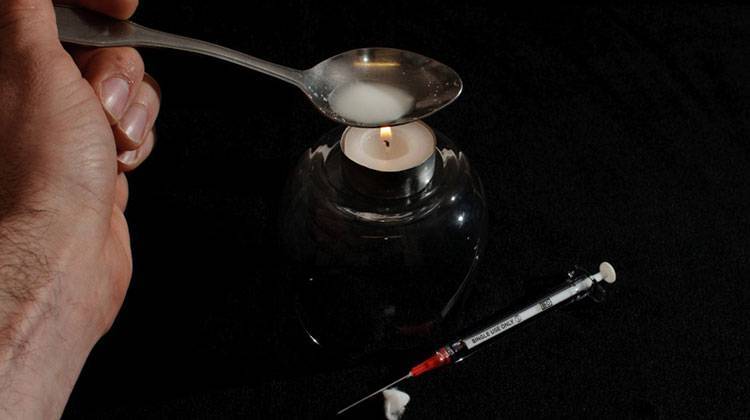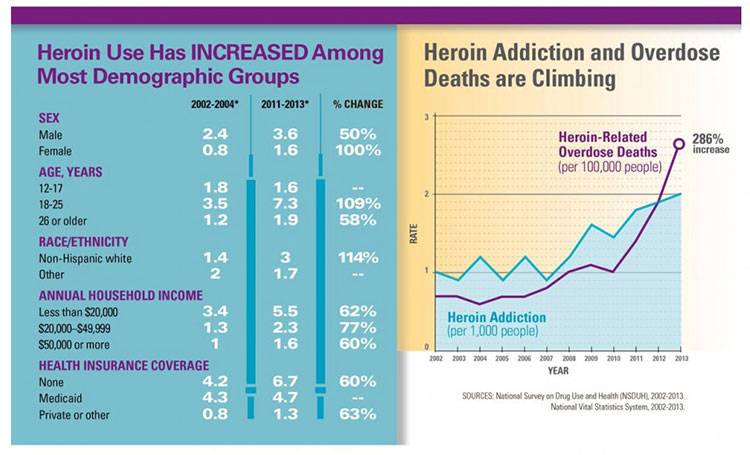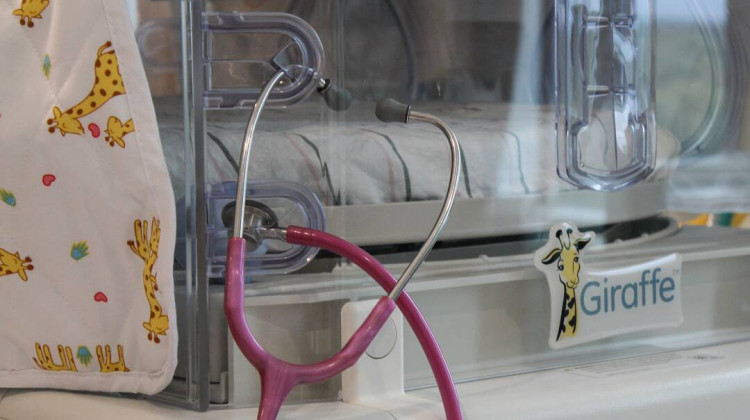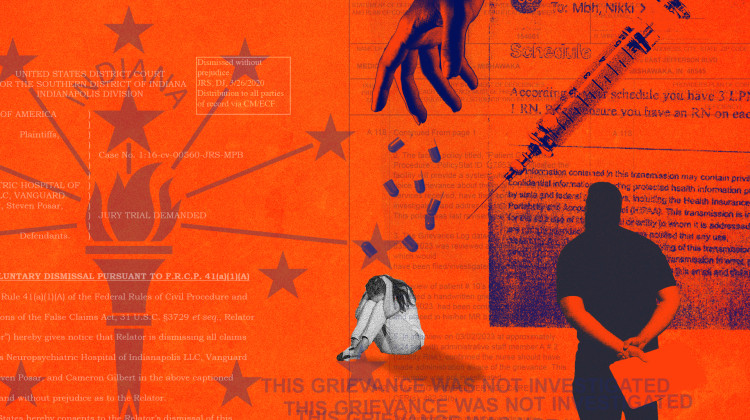
Heroin use is increasing among most demographic groups across the United States, a new CDC report shows.
Photo: CGehlen (Flickr)BLOOMINGTON -- The face of heroin use is changing, and the number of people using the drug is soaring.
That’s according to a new report from the Centers for Disease Control, which, among other trends, shows a 109 percent increase in heroin use among 18-25 year olds.
Gary Ashenfelter, training coordinator with the Indiana DEA says his agency is understaffed, and he says that’s made it harder to mitigate the growth of heroin use.
“Unfortunately, we’re undermanned, and it’s like we’re pushing against a wall,” he says. “And if we don’t keep pushing, the wall is going to fall on us, and we’ll just succumb to it.”
Several parts of Indiana have been witness to an increasing number of heroin-related overdoses in recent months, which has prompted lawmakers to pass legislation expanding access to the opioid overdose intervention drug, Narcan.
Ashenfelter says while Narcan has the ability to save lives, using it more frequently it could also have a downside.
“I think that’s a double-edged sword,” Ashenfelter says. “Those people who are using drugs may turn to Narcan as a crutch.”
Ashenfelter says he doesn’t think the general public should be armed with Narcan, adding it should be reserved for law enforcement and emergency personnel.
In just more than a decade, the heroin-related overdose death rate skyrocketed 286 percent.
But the CDC report reveals more than an increase in overdoses. It shows a jump in heroin use among most demographic groups.

Photo: U.S. Centers for Disease Control
Heroin addiction and overdose deaths have climbed 286 percent in just more than a decade.
CDC Director Tom Frieden says cheaper, more available heroin and prescription drug abuse are fueling the increase.
“To reverse this trend we need an all-of-society response – to improve opioid prescribing practices to prevent addiction, expand access to effective treatment for those who are addicted, increase use of naloxone to reverse overdoses, and work with law enforcement partners like DEA to reduce the supply of heroin,” he says.
According to the report, some of the groups most likely to abuse the drug include men, non-Hispanic whites, people with an annual household income less than $20,000 and the uninsured.
The report also found increases in groups that previously had low rates of heroin use, such as women — among whom use of the highly addictive drug has increased 100 percent.
As NPR reports, Frieden calls the epidemic a “one-two punch.”
First, he says, the widespread use of opiate painkillers has primed people for heroin addiction. These drugs and heroin have essentially the same active ingredient. The second punch is that heroin is increasingly available, and often far cheaper than prescription painkillers. Frieden estimates that heroin is available on the street at one-fifth the cost of prescription pain pills.
The CDC says states can play a “central role” in addressing the issue of heroin use by:
- Making programs monitoring prescription drugs easy and timely to use.
- Increasing access to substance abuse treatment services.
- Expanding access to and training for administering the overdose intervention drug naloxone.
- Ensuring access to preventive services, including access to “sterile injection equipment from reliable sources.”
 DONATE
DONATE






 Support WFYI. We can't do it without you.
Support WFYI. We can't do it without you.